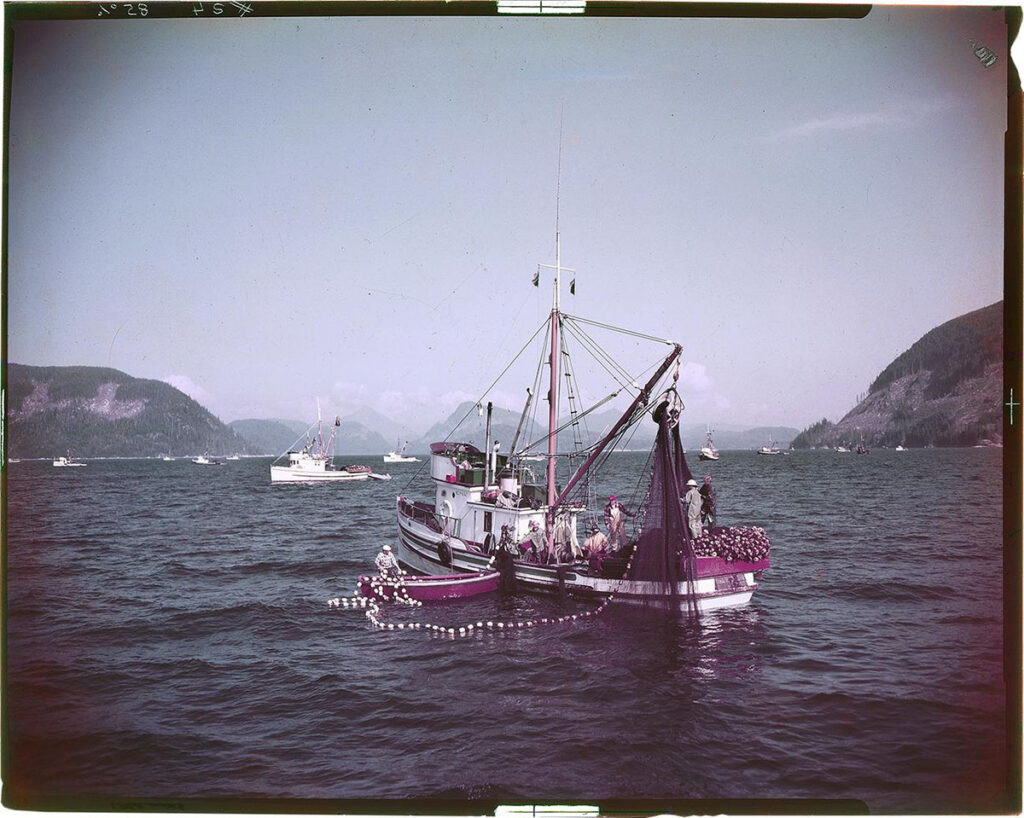Between 1969 and 1979, the Bank of Canada released one of the most visually celebrated sets of currency in our nation’s history: the Scenes of Canada series. These notes weren’t just monetary instruments – they were miniature masterpieces that captured the very essence of Canadian life and landscape.
While the bold colours and distinctive portraits caught attention, it was the use of photography that truly set this series apart. For the first time, banknotes became a canvas for real Canadian scenes, transforming everyday currency into a storytelling tool for national identity.
Photography as the Foundation of Design
The back of each note featured a finely detailed engraving based on an actual photographic image – a groundbreaking design choice at the time. The Bank of Canada collaborated with photographers and used authentic photographs of Canadian landscapes, industry, wildlife and everyday life. These weren’t imagined scenes or artistic composites – they were real moments frozen in time, reinterpreted through the meticulous artistry of hand-crafted banknote engraving.
Photography brought realism, emotion and familiarity to currency, allowing Canadians to literally hold their country in their hands.
A Scene-by-Scene Look at the Notes
$1 – Parliament Hill from across the Ottawa River
A classic Canadian vista captured in striking detail. Based on a photograph taken by Malak Karsh (brother of Yusuf Karsh) from the Hull (now Gatineau) side of the river, this view of Parliament Hill represents democracy and national pride.
$2 – Inuit Hunting Scene
Drawn from a photo by Richard Harrington, this image shows an Inuit man hunting seals near Pangnirtung, Nunavut. It remains one of the most culturally significant notes ever issued, highlighting the role of Indigenous peoples in Canada’s history.
$5 – Salmon Seiner on the Pacific Coast
Depicting the West Coast fishing boat BCP45, this note reflects Canada’s strong maritime traditions. The scene is a tribute to the country’s resource-based economy and hardworking fishing communities.
$10 – The Last Smokestack
The back of this $10 bill features the Polymer Corporation in Sarnia, Ontario based on a photograph by George Hunter. This photograph was selected because of the incredible detail and complexity of the plumbing and tanks which highlighted Canadian achievements in industry.
$20 – Moving Mountains
This stunning view of Moraine Lake in the Valley of the Ten Peaks, Banff National Park originally was created from a composite of several photos, instead of one image. Photoshop before there was Photoshop – the printing company or their engraver moved trees around to better frame the scene. That image was replaced with a photograph from the Canadian Pacific Railway collection.
$50 – The RCMP Musical Ride
This visually striking note showcases the pageantry of the Royal Canadian Mounted Police in ceremonial dress. It’s a tribute to tradition, order and a uniquely Canadian institution.
$100 – Classic Maritime Vignette
Fishing boats in Lunenberg, Nova Scotia’s harbour highlight day-to-day life in our Maritime provinces. The highly detailed engraving was crafted from a photograph by G. Hedley Doty.
Why It Mattered Then – and Still Does
The Scenes of Canada series wasn’t just about aesthetic appeal. At a time when Canada was further defining its identity post-centennial, these banknotes reflected who we were – from the Arctic to the Atlantic to the Pacific. They also demonstrated the growing recognition of photography as a vital art form capable of shaping culture and memory.
Today, the series stands as a testament to how photography, craftsmanship and national pride can intersect. These notes weren’t just designed – they were composed using light, lens and landscape.
Other Series Stories
Wildlife photographers will be thrilled to learn more about the “Birds of Canada” series 1986: The Birds of Canada Series – Bank of Canada Museum and the photographs used to create these beautiful banknotes featuring some of the most recognizable birds of Canada.
To read about all the Canadian bank note series, please visit: Complete Bank Note Series – Bank of Canada Museum
Final Thoughts
As digital payments rise and physical money becomes less common, looking back on the Scenes of Canada reminds us of the artistry and intentionality behind the notes we once exchanged daily. The series lives on not just in collections but in the hearts of Canadians who saw their country reflected on every bill.
Want to learn more about these photographs and the processes used to create the bills? Visit the Bank of Canada Museum’s website to explore the full series and the photographs that inspired them.
Direct Links:
$1: Mishap on the dollar – Bank of Canada Museum
$2: The Story Behind the Engraving – Bank of Canada Museum
$5: The Fisher, the Photographer and the Five – Bank of Canada Museum
$10: The Fisher, the Photographer and the Five – Bank of Canada Museum
$20: Moving mountains – Bank of Canada Museum
$50: The Reluctant Bank Note – Bank of Canada Museum
$100: Scenes of Canada Series $100 Note – Bank of Canada Museum
Photography didn’t just help create these notes – it helped capture the soul of a nation.
I’d like to thank the Bank of Canada Museum for permission to share these stories with you.
Author: Will Prentice
A portrait, fine art and commercial photographer for 30 plus years, Will Prentice is not just a contributor to PHOTONews magazine, but also host of PHOTONewsTV, owner of Captura Photography+Imaging and Technical Support/Brand Manager for Amplis Foto, Canada’s largest distributor of photographic equipment.
Will teaches photographers of all skill levels how to improve their craft – from creative photo projects to picking the right gear for their needs to flattering lighting to getting the best expressions to creating final images for screen and print. His unique style of highly detailed images with perfect tonality, wide dynamic range and stunning colour is instantly recognizable. Commercial clients rely on Will’s creative eye and mastery of lighting.
When he’s not behind the camera or in front of a class, you’ll find Will outdoors in any weather – usually on one of his bikes or enjoying time with his grandchildren.













Wonderful post, Will. Thank you!
Thanks Kevin! Glad you’re still reading along. Hope all is well!!